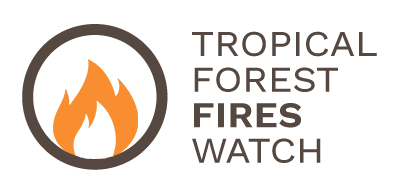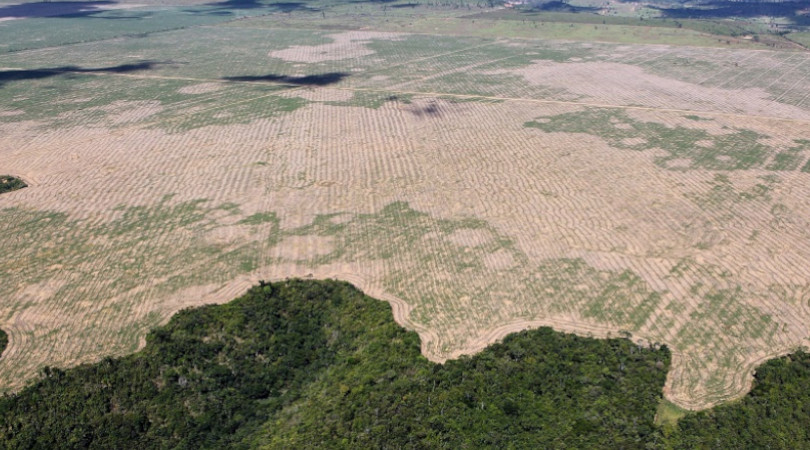What “Breaking Boundaries: The Science Our Planet”, a Netflix documentary, says regarding our concerns about deforestation of the Amazon. And how a “crippled” environmental licensing legislation can rupture unrecoverable boundaries.
Netflix has just released the documentary “Breaking Boundaries: The Science of Our Planet”, with Johan Rockström and David Attenborough, on how Humanity has pushed the Earth beyond the boundaries that have kept it stable for 10,000 years since the dawn of civilisation. The documentary shows how close we are to these tipping points. It also talks about the need for Humanity to engage in a transition that would have been unthinkable only a few decades ago.
The limits of deforestation of the Amazon and other tropical forests
Two of these limits – biodiversity loss and climate change – are directly related to the deforestation of tropical forests.
Tropical forests are home to the Planet’s greatest terrestrial and riverine biodiversity. The current rate of deforestation of these forests is responsible for approximately 20% of global greenhouse gases emissions. These gases are so called because they trap heat in the atmosphere. In Brazil, emissions from deforestation account for 45%[1] of the Country’s total emissions. Deforestation in the Amazon alone is responsible for 36%. The destruction worsens global warming and accelerates the extinction of species.
In a now classic paper, climatologist Carlos Nobre and biologist Thomas Lovejoy suggest that the Amazon is rapidly heading towards its tipping point. Once past this threshold, it will lead to parts of the forest turning into degraded areas, vast grasslands with sparse bushes and small trees.
This would happen because the stability of the Amazon Forest is based on a delicate but massive conveyor belt of water. The conveyor starts in the Atlantic Ocean and extends all the way to the Andes, where it bends southward. The conveyor is not linear, but rather composed of successive cycles of rainfall and forest evapotranspiration. Removing the trees therefore weakens the water current. A smaller amount of water circulating in the region, in turn, is fatal to the size of the forest. Smaller, less thirsty trees and bushes replace its large tangle of trees and symbiotic species.
Nobre and Lovejoy estimate that the tipping point should occur when the forest loses between 20% and 25% of its original cover. But at what point are we in this process? At the time of the Portuguese caravels’ arrivals, the Brazilian part of the Amazon biome occupied an area of almost 4.2 million km2. According to INPE[2], 17% of the biome has already been lost. Nobre, however, believes that the loss is closer to 20%. This is because his figures consider the severely degraded areas and those where the forest is recovering (although without its previous rich biodiversity).
So we are about 200,000 km2 away from the biome’s tipping point. In other words, if we deforest another 200 thousand km2 we will exceed the limit of 25% of the biome’s destruction. For didactic purposes, we will call these 200 thousand km2 our maximum deforestation “budget”.
Before discussing some of the processes that may lead us to exceed this limit, it is worth remembering that, between 2004 and 2012, the annual deforestation rate reduced more than 20 thousand km2. This shows that it is possible to stop the destruction. If actions similar to those of that period were added to large scale forest restoration programs, the forest would again fix a lot of carbon. And it would create the conditions for its biodiversity to reestablish.
Breaking boundaries with the “crippling” of the Environmental Licensing
In the last few years, deforestation in the Amazon has once more been steadily increasing. And the Federal government’s deregulations and those passing through the gates of Congress may make the damage irreversible.
Two examples are the Bill that “cripples” environmental licensing and the “Land Grabbers’Bill”. The latter ends up boosting illegal occupation of large tracts of Public Lands. If approved, these two bills will impose a death sentence for an important part of forest south of the Amazon River.
In its current version, the proposed licensing law waives, for example, the environmental license for road expansion and improvement. This is a historically proven recipe to increase deforestation. Many of the existing and projected roads in the Amazon are surrounded by Public Lands. Once the roads are implemented or improved, the “Land Grabbers” Bill” comes into play, allowing for self-declared acquisition of up to 2,500 hectares of land. This Bill is a green light for public land grabbing. This process has installed branch road networks that, on satellite images, look like “fish spines”.
A quick look at the dynamics of occupying areas surrounding new roads indicates that 2 km2 of forest is annually cleared for each kilometer of road widened and/or paved1[3]. On the government’s wish list for roads are the 850 km stretch of BR 319 in the state of Amazonas, the 215 km connecting Humaitá to Lábrea, and the final stretch of BR 163 up to Itaituba. This is almost 1,400 km which – if historical trends are maintained – could lead to 83,000 km2 of deforestation by 2050. This would drop our maximum deforestation “budget” to 117,000 km2.
Another declared and insistent intention of Bolsonaro’s government is to open Indigenous Lands to mining activities, which in themselves are irrecoverable disasters – just look at the lake formed where the Serra Pelada pit was. This Bill also authorizes the construction of hydroelectric dams without Indigenous Peoples’ proper consultation. Add this to the “crippling” of the environmental licensing and the power sector’s wish list – we could see another 2,500 km2 of forest occupied by hydroelectric reservoirs[4] – and our “budget” drops to 114,500 km2.
Considering we have almost 30 years until 2050, not blowing this budget represents containing illegal and legal deforestation to less than 4,000 km2 per year. A figure never before seen in the records of this Country. And the Federal Government and Congress still want to tamper with the demarcation of Indigenous Lands.
The Environment “Sinister”, Ricardo Salles, coined the expression “run the cattle herd” for the destruction of infra-legal regulations at the beginning of the pandemic, what he has been doing with terrible competence ever since. Congress, now presided by Bolsonaro’s allies, is “running the cattle herd” with even more damaging consequences. If passed, the combination of three Bills could cause the Amazon Rainforest to go beyond its tipping points and become one immense grassland.
The “running of the cattle herd” may cease to be just a figure of speech. The vast grasslands in soils known to be poor, such as those of many Amazon regions, offer little alternative opportunity to raise cattle on degraded pastures. If there is still exists a beef consumer market by then.
This article is authored by Shigueo Watanabe and was originally published in Portuguese on ClimaInfo.org.br
[1] http://plataforma.seeg.eco.br/total_emission#
[2] National Institute for Space Research (INPE): http://www.inpe.br/faq/index.php?pai=6
[3] Along the Pará stretch of BR-163 road, between Castelo dos Sonhos and Jardim de Ouro cities, between the years 2000 and 2019, this rate was 2.9 km2/year/km. The expansion of BR-364 road, between Porto Velho and Rio Branco cities, also between 2000 and 2019 is associated with a deforestation rate of 1.0 km2/year/km. This estimate may be underestimated. The occupation of Rondônia state with the paving of BR 364 road between Cuiabá and Porto Velho cities in the 40 years between 1980 and 2019 led the state to lose 120,000 km2 of forest, half the state’s area. This corresponds to a rate of just over 4 km2/year per km of road.
[4] This area corresponds to the lakes of the Tabajara, Castanheira, Bem Querer and Tapajós Complex power plant projects. There are others, like the one in Marabá city, that were left out of this account, for being outside the forest area itself or for being considered unlikely to be feasible in the 30-year horizon.

